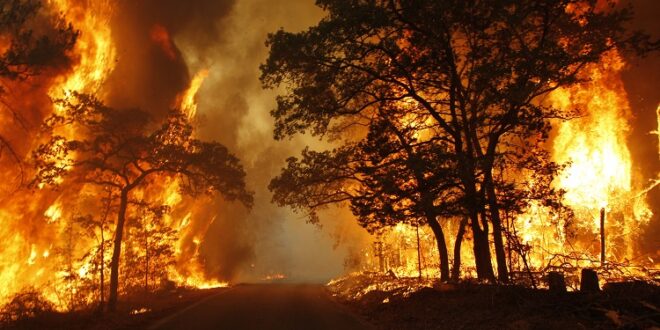Natural disasters can strike at any time! There have been numerous natural disasters such as hurricanes, winter storms, and floods in the US alone. While recently, Australia went through a traumatizing adversary in the form of a forest fire in 2020. These natural disasters throw the local population off tangent. There are lives lost, houses destroyed and families separated from each other. Unless professionals step in, there is no chance of recovery, and this is where public health professionals come in. These experts work on helping and saving communities and ensure that communities are safe from all forms of infectious and noninfectious diseases during an emergency.
It is imperative because as the local population scrambles to save their lives, the last thing they want is to become a carrier for a lethal disease. So when a natural disaster strikes up, here’s how public health professionals respond to them:
1. Establish Crisis Communication
When a natural disaster strikes, the first hurdle public health officials encounter is the lack of communication. Storms destroy electricity pylons and interrupt mobile signals. So public health officials need to use satellite phones and radios to communicate with the media to establish contact. It is also essential to inform people how they should keep themselves safe and prevent harming themselves further. Suppose you’re a professional aspiring to pursue public health and disaster management. In that case, you should look into an MPH disaster management degree that can teach you how to secure the parameter and ensure you can get through to the fire department and hospitals. It is an ideal program for professionals in occupational health, industrial hygiene, environmental health, or other closely related fields.
2. Assess The Needs Of The Population
When helping people get to safety, it is also essential to assess their needs. It means public health officials need to decide how many people need immediate help, such as are severely injured, contracted an illness, and what to do with those who died. People who are bleeding need immediate attention and ensure that the wound is clean before sending them to the hospital. After taking care of injuries, they need to help relocate the vulnerable community to schools, shelters, and any safe space for the time being. Once the population is secure, they need to start restoring power, getting more medical supplies, and evacuating more injured people into rescue shelters.
3. Ensure The Adequate Supply Of Food and Water
Not every food during a natural disaster is edible. During power outages, food can get contaminated, and flooding can cause clean water to mix with contaminated water. If the population is not careful, they can accidentally eat these unhealthy meals and expose them to food poisoning, hepatitis, and cholera.
It is the job of public health professionals to ensure that people receive safer meals. Even though most of this food is bland, but is safer than going for contaminated food. The water also needs to move out, so public health officials may test the safety of the water systems and wells, ensuring they are not about to burst and drain this water. After which, they may ration the population meals as they survey the extent of the damage. Once they are sure that the population is safe, they may inspect restaurants and retail food facilities and ensure they are safe to reopen. The final task is to ensure all the contaminated food is taken care of and is nowhere near the population. This work may take weeks itself, depending on the extent of the damage.
4. Ensuring People Are Informed
The public health officials turn to federal and state departments to deploy appropriate information to the population. It entails informing the people how to prepare for any natural disaster. Any possible natural disaster headed their way, including relocating, storing food, and what parts of the house to keep away from. These departments then also provide information on what to do after a natural disaster has passed. The reason for choosing these departments is because these officials can make the information available on various media.
5. Establish Emergency Protocols
Whenever a natural disaster strikes, public health officials need to activate their emergency protocols. It, in turn, coordinates with other government officials to start a series of their protocols during emergencies. In this way, the population and affected communities get resources and technical support right away so that public health officials can reach them and provide adequate support. Part of these emergency protocols includes life rafts, helicopters, and life jackets. It helps take care of the population and pull them to safety.
6. Making Sure That The Diseases Are Contained
One of the most severe challenges public health officials face is an outbreak of disease. During natural disasters, diseases spread far and wide and impact communities. If these diseases are not contained right away, they may cause an epidemic. Public health officials have the resources to study the graphs and determine the chances of an infection spreading. If they believe the community has been exposed to strains of the virus, they must be quarantined and tested. It isn’t an easy task, as multiple aspects of a disaster need to be managed.
7. Preventing Vector-Borne Diseases
Natural disasters also bring with them pests and vectors that can spread diseases such as airborne. These pests must be taken care of and sprayed before they can cause substantial damage. If they don’t do this right away, these diseases can get out of control, which will take a toll on the healthcare system.
8. Removing Environmental Contaminants
Massive flooding can cause a breakdown of structures and infrastructures. It also exposes mold, sewage, chemicals, and hazardous material to mix. It is lethal and needs proper cleaning before workers can go back and work in these areas. Public health officials have the resources to drain and clean these areas before testing them for usage. They also need to educate the people who will return to these areas to keep themselves safe and ensure their houses are free of contamination. The highest priority is always given to children, the elderly, women, and the disabled community, making sure they are safe and protected at all times.
Wrap Up
Natural disasters are a tremendous challenge for humanity. Cities are destroyed, homes collapse, and in some cases, deaths happen on a large scale. We alone cannot recover from a disaster and need all hands on deck to help us heal. Public health officials are critical in helping us recover from these disasters. They ensure we are relocated to safety, our wounds are treated, and we have food and water for the next few days.
Public health officials also need to ensure the area is clean of debris and contaminants while caring for the community. These officials also make sure we get relevant instructions on keeping ourselves safe before and after a disaster. Finally, as we return to recovering, these officials continue providing care and shape policies that will keep us safe further from any disasters. So, we owe a lot to these workers for keeping us safe and protected no matter what the cost.
 HammBurg Be informed with latest news, reviews, entertainment, lifestyle tips, and much more.
HammBurg Be informed with latest news, reviews, entertainment, lifestyle tips, and much more.




